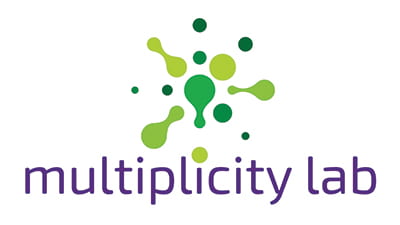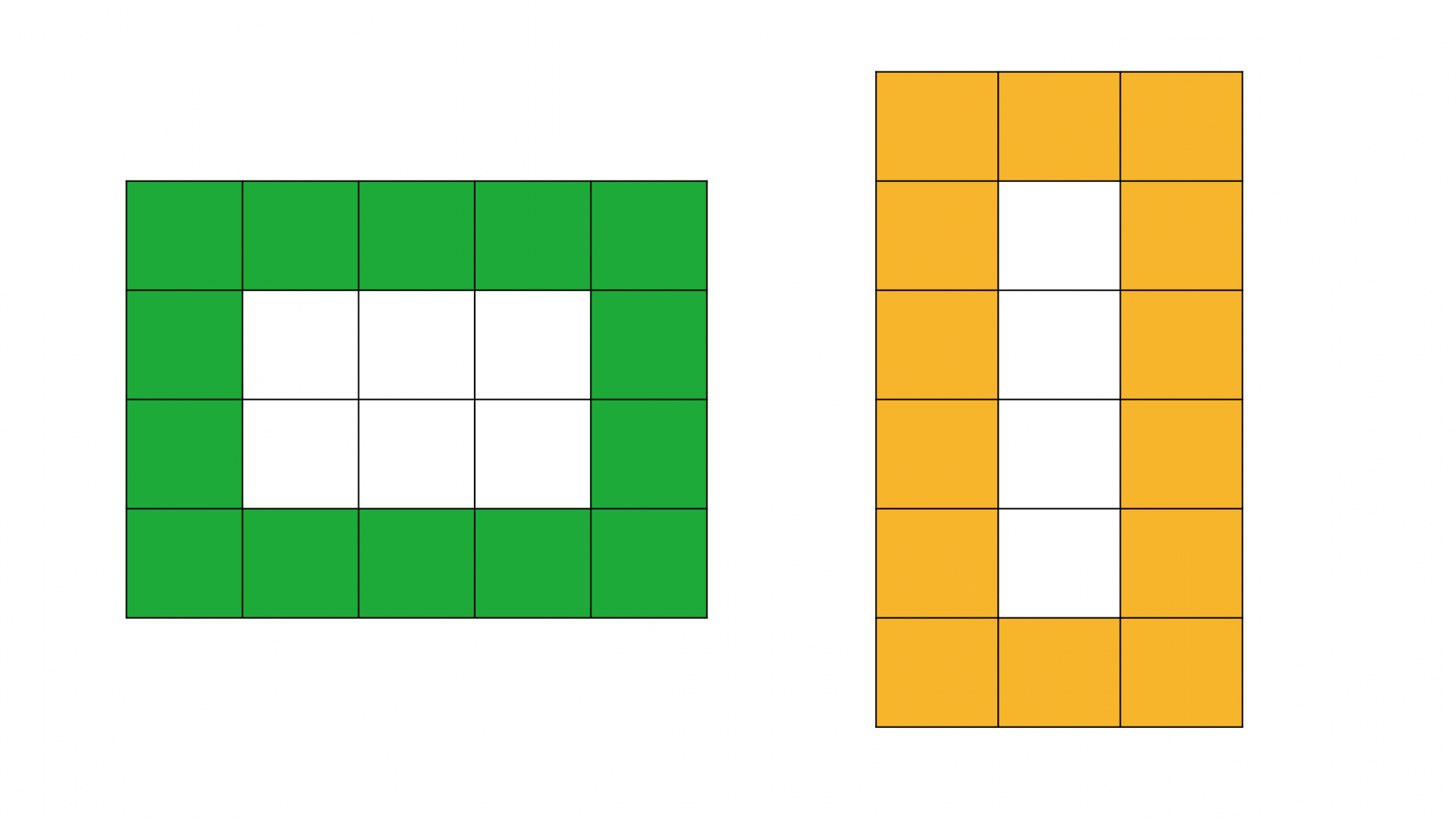Image of the Week: Anticipating Student Thinking: Asking How Many? with Coins
September 22, 2024Array Talks
At multiplicity lab, we have developed three kinds of array talks that you can try with your students. Each one invites students to engage in a different kind of mathematical thinking by asking three different kinds of questions: How many?, What’s missing?, and Which is more? Let’s look at what each kind of array talk can do for your students:
How many? Look at image below and ask yourself, How many squares are shaded?
To answer this question, you could count the squares, but far more efficient would be to decompose the image into sections and then recompose the whole. Some might see this as two overlapping 4 x 4 squares and try to account for that overlap. Others might see it as two 3 x 4 rectangles, with a column of 6 green squares between them. Still others might focus on the whole 7 x 6 array and subtract the two empty 2 x 6 rectangles. Look at all the composing and decomposing numbers linked to multiplicative thinking you just unleashed!
What’s missing? The next image, in some ways, asks the opposite: How many squares are missing? But in this case, the grid is also missing from that section of the array.
Thinking about the missing squares still involved decomposing and recomposing, but first students have to mentally impose the grid structure onto the empty space. This is called spatial structuring, and it is far harder than you might think, involving spatial manipulation and reasoning.
Which is more? In this kind of array talk, we show students two arrays, and in the image below we ask, Are there more green squares or orange squares?
Notice that these images invite students to attend to structure when making the comparison. In this case, there are two arrays (4 x 5 and 6 x 3), which would be easier to compare if entirely shaded, but how do the borders compare? We do not need to know how many green or orange squares, just which is more, and this opens up different kinds of strategies that students might use to reason, like looking for equal parts they can eliminate from the comparison.
See what different conversations open up when you try each kind of array talk with your students. We have more than 50 array talks to choose from on our website!
To multiplicity, cheers!
Jen Munson and the multiplicity lab group





